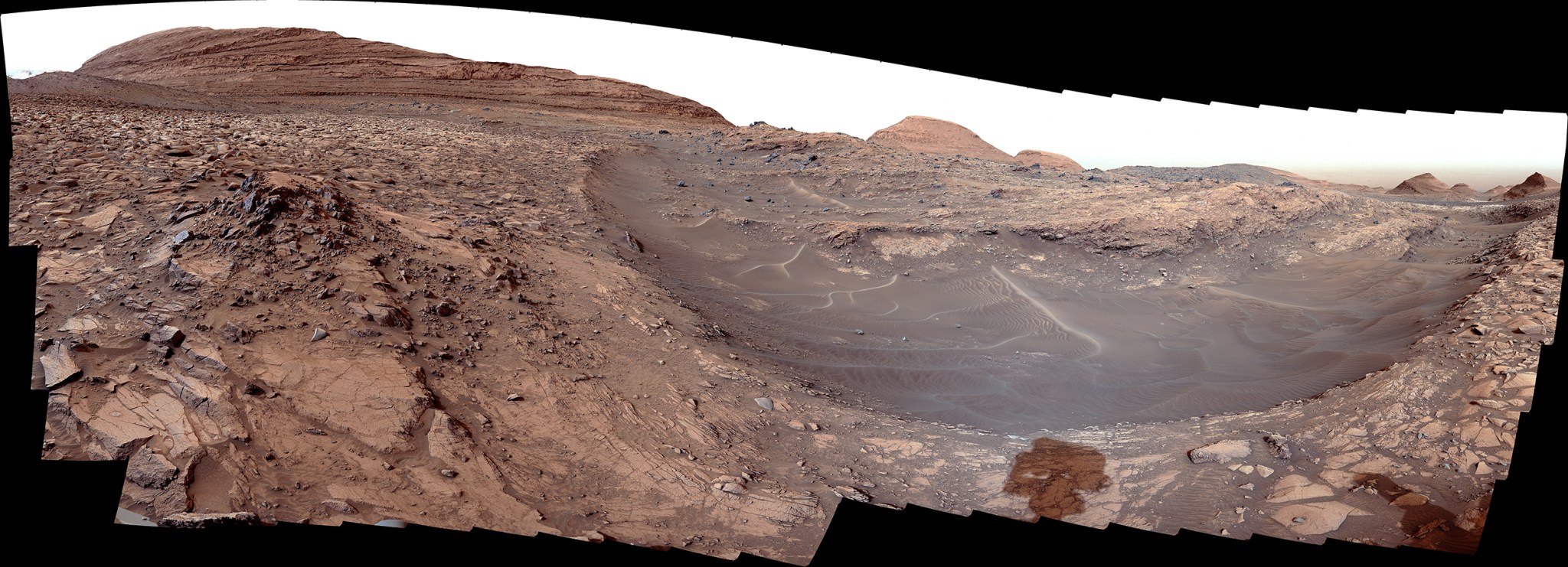Curiosity Views Gediz Vallis Channel
| Credit | NASA/JPL-Caltech/MSSS |
|---|---|
| Historical Date | July 18, 2024 |
| PIA Number | PIA26367 |
| Language |
|
NASA’s Curiosity Mars rover used its left Mast Camera, or Mastcam, to capture this 180-degree view of Gediz Vallis channel on March 31, 2024, the 4,142nd Martian day, or sol, of the mission. The shadow of the rover’s mast — Curiosity’s “head” — can be seen at bottom right.
This area was likely formed by large floods of water and debris that piled jumbles of rocks into mounds within the channel and created a long ridge downhill (Gediz Vallis ridge). On the right side of the scene, just across a lane of dark sand covering the near side of the channel, is “Fascination Turret,” one of several mounds found within the channel. On the left is a pile of rocks nicknamed “Hinman Col.” The region, rich in salty minerals called sulfates, is in the foothills of Mount Sharp, a 3-mile-tall (5-kilometer-tall) mountain within Mars’ Gale Crater.
This panorama is made up of 176 individual images that were stitched together after being sent back to Earth. It was taken around 8 a.m. local Mars time, when sunlight from the east illuminated the steep side of Fascination Turret.
The color has been adjusted to match lighting conditions as the human eye would see them on Earth.
Curiosity was built by NASA’s Jet Propulsion Laboratory, which is managed by Caltech in Pasadena, California. JPL leads the mission on behalf of NASA’s Science Mission Directorate in Washington. Malin Space Science Systems in San Diego built and operates Mastcam.
For more about Curiosity, visit: https://science.nasa.gov/mission/msl-curiosity/.




























